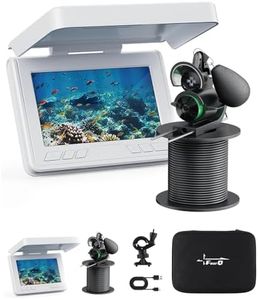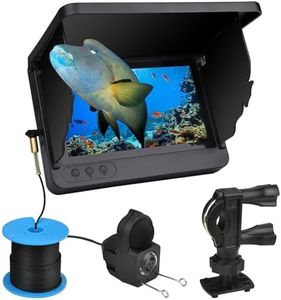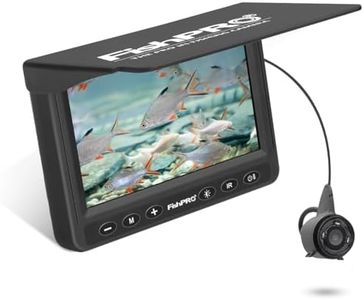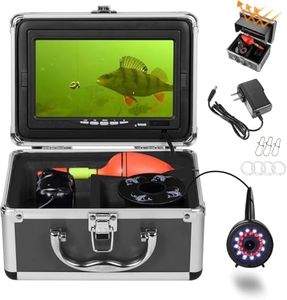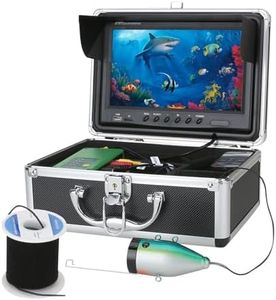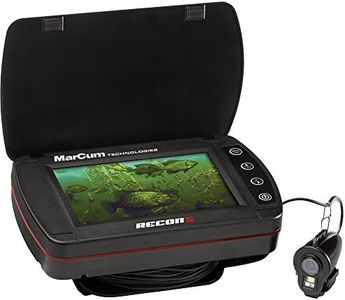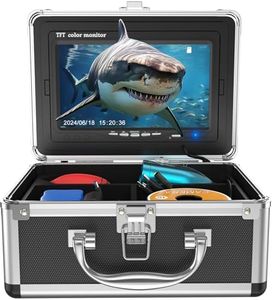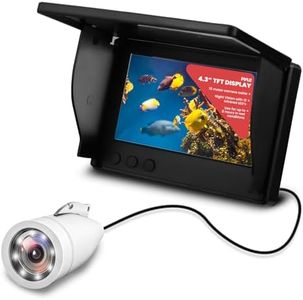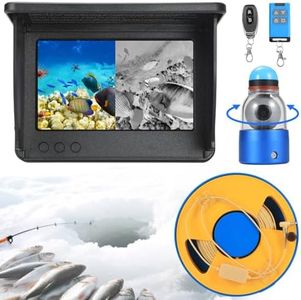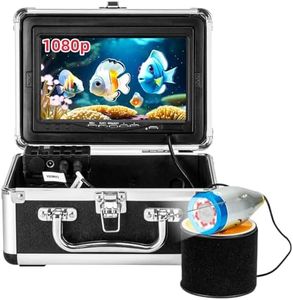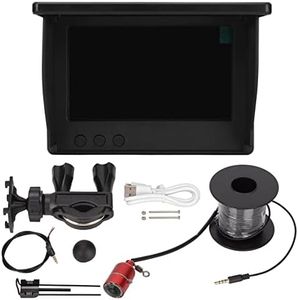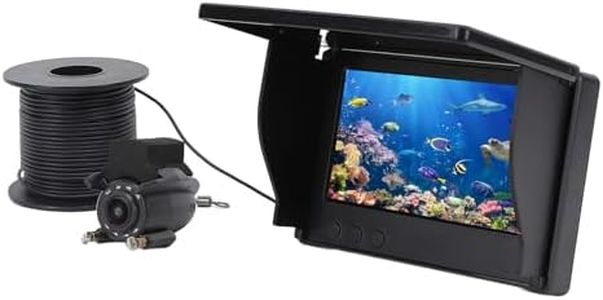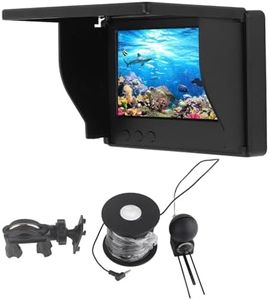We Use CookiesWe use cookies to enhance the security, performance,
functionality and for analytical and promotional activities. By continuing to browse this site you
are agreeing to our privacy policy
10 Best Underwater Fishing Cameras
From leading brands and best sellers available on the web.Buying Guide for the Best Underwater Fishing Cameras
Choosing the right underwater fishing camera can really improve your fishing experience by giving you a clear view of what's happening below the surface. There are many factors to consider that affect how well the camera will work in your fishing environment. It’s important to match the camera’s features to how, where, and when you fish, so you get the most useful information during your fishing trips.Camera ResolutionCamera resolution refers to how clear and detailed the image or video from your underwater fishing camera will look. Higher resolution means sharper and clearer pictures, making it easier to identify fish and underwater structures. Resolutions commonly range from standard definition (SD) to high definition (HD), and even full HD (1080p) or higher. If you mostly use the camera in deep, murky waters or need to spot small fish and details, go for a higher resolution. If you just want a general view and don’t mind less detail, a lower resolution model will work.
Field of View (FOV)The field of view is how wide the camera can 'see' underwater. A wider field of view lets you see more area at once, which is helpful for spotting fish in large spaces. Narrower views focus on a smaller area, showing more detail in that specific spot. If you fish in wide open lakes or want to monitor a large area, look for a wide-angle camera. If you’re fishing in small, confined spaces, such as a dock or ice hole, a narrower field might suit you better.
Lighting/Infrared CapabilityLighting or infrared capability helps the camera see in dark or murky waters, which is common when fishing at depth or at night. Some cameras have built-in LED lights or infrared LEDs to illuminate the underwater area. Cameras with adjustable lighting are helpful because you can use just the amount you need. If you often fish in deeper water or at night, pick a camera with strong lighting options. If you fish in shallow, clear water during the day, you may not need as much lighting.
Cable Length/Wireless RangeCable length or wireless range decides how deep or far from your boat the camera can go. Longer cables let you reach greater depths, while wireless systems allow more freedom but might have range limits. For deep sea or ice fishing, choose a longer cable. If you often fish in shallow waters or don’t need to go deep, a shorter cable or a wireless setup could be easier to use.
Display Type and SizeThe display is where you see the video or photos from your camera and can be built into the camera system or viewed on a separate device like a smartphone. Larger displays make it easier to spot details, while small displays are more portable. If you want to view the action clearly and comfortably on the spot, go for a bigger and brighter display. If portability and simple setup are more important, a smaller or phone-based screen may work best.
Battery LifeBattery life is how long the camera system can operate before needing a recharge. Longer battery life means you can fish longer without interruption. Battery life often ranges from a few hours to all day, depending on features used, like lighting and screen brightness. For long fishing sessions, pick a camera with a long-lasting battery. If you only fish for a short time or can easily recharge, shorter battery life can be sufficient.
Waterproof RatingThe waterproof rating tells you how well the camera can handle being underwater for extended periods and at different depths. Ratings like IP67 or IP68 show the level of protection. For deep or saltwater fishing, choose a camera with a higher waterproof rating to ensure it survives harsh conditions. In shallow, freshwater areas, basic waterproofing should be enough.

